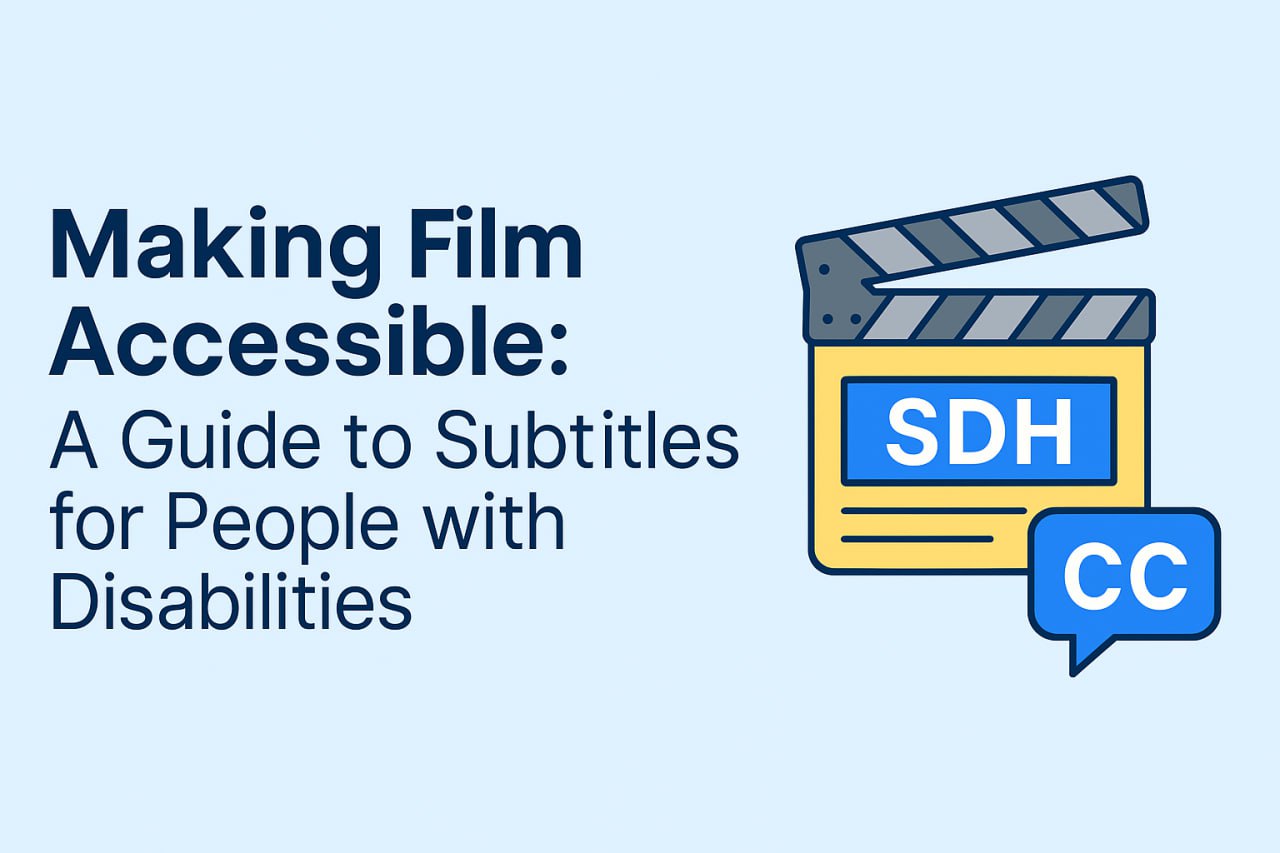Let’s make stories that everyone can access
In the world of film and video, storytelling is more than just visuals and dialogue — it’s about creating an experience that’s accessible to everyone. For people with disabilities, especially those who are deaf, hard of hearing, or neurodivergent, subtitles are not just helpful — they are essential.
Accessibility in film isn’t just about compliance — it’s about respect and inclusion. Subtitles allow more people to experience the full depth of a story, understand emotional context, and engage with the content fully.
Let’s talk about the different types of subtitles used in film and television that help make content inclusive and accessible — beyond any language.
Standard Subtitles (Translation Subtitles)
These are the most people are familiar with — they translate spoken dialogue from one language into another. While helpful for non-native speakers, they don’t include important non-verbal sounds, speaker cues, or tone — making them insufficient for deaf or hard-of-hearing viewers.
SDH: Subtitles for the Deaf and Hard of Hearing
These subtitles are designed specifically for people who can’t rely on audio. SDH includes:
- Dialogue
- Speaker identification
- Sound effects (e.g., [door slams], [music playing])
- Tone indicators (e.g., (angrily), (whispers))
They provide a more complete picture of what’s happening on screen, which is crucial for following the story — especially when sounds contribute to the emotional impact or plot.
Such subtitles are usually available on DVDs, Blu-rays, and streaming platforms like Netflix and Disney+.
Closed Captions (CC)
Closed captions are very similar to SDH but are most commonly used in TV broadcasts:
- They can be turned on or off by the viewer
- Often come with positional cues (e.g., captions on the left or right of the screen to show who’s speaking)
- Typically support live TV or pre-recorded shows
They serve the same purpose as SDH but with more emphasis on technical delivery.
Open Captions
Open captions are always visible — they’re “burned into” the video and can’t be turned off.
These are especially useful in:
- Public screenings
- Social media videos
- Educational settings
- Situations where audio is off or unclear
While not customizable, open captions ensure universal visibility, which is great for accessibility in group environments.
Live or Real-Time Captions
Used during live events, news, or conferences, these captions are created in real time by:
- Human stenographers
- Automatic speech recognition (ASR) systems
While ASR technology is improving fast, it’s still prone to errors — especially with background noise, fast speech, or overlapping dialogue. Human captioners are still the key in live accuracy.
Descriptive Subtitles (For Neurodiverse Audiences)
These are less common but incredibly valuable. Descriptive subtitles are adapted for viewers with:
- Autism spectrum disorder
- ADHD
- Cognitive processing challenges
They may include:
- Simplified language
- Contextual clarifications
- Color-coded text for different characters or tones
These types of subtitles are part of a growing movement to make content more inclusive to neurodivergent viewers, not just those with hearing loss.
With such a variety of subtitles, many filmmakers, content creators, and platforms use the tools and take responsibility to ensure the content is inclusive by design, not as an afterthought.




